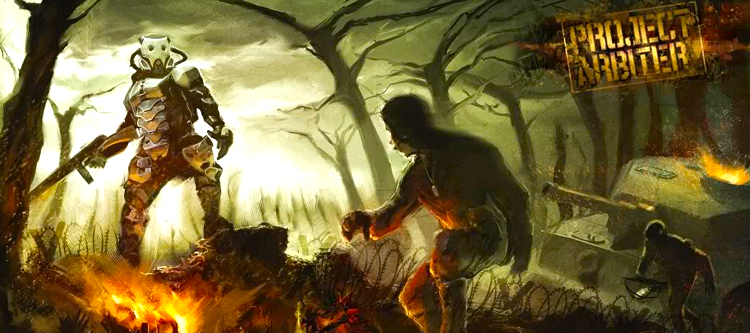By Jason Apuzzo. Recently here at LFM we’ve been showing you some examples (see here and here) of up-from-the-bootstraps indie film productions that are taking advantage of low-cost VFX software to tell large-scale stories. We’ve also noted how several of these films seem to be picking up on the ‘invasion of America’ theme, a theme that will no doubt be kick-charged in a big way when MGM’s Red Dawn remake is eventually released.
Today we wanted to mention another such production, a science fiction comedy that’s been getting hyped lately (see articles in Wired and in the Hollywood Reporter’s HeatVision blog), called Iron Sky. Iron Sky is an example not only of what low-budget filmmakers can accomplish using high-end visual FX packages, however, but is also the latest example of how to finance a film through “crowd funding.”
First, the premise. Let me quote from the film’s website:
Towards the end of World War II the staff of SS officer Hans Kammler made a significant breakthrough in anti-gravity. From a secret base built in the Antarctic, the first Nazi spaceships were launched in late ‘45 to found the military base Schwarze Sonne (Black Sun) on the dark side of the Moon. This base was to build a powerful invasion fleet and return to take over the Earth once the time was right. Now it’s 2018, the Nazi invasion is on its way and the world is goose-stepping towards its doom.
So there you have it – goose-stepping Nazis from outer space. Iron Sky is being co-produced by companies in Finland, Germany and Australia. Currently they’re in pre-production, with shooting set to begin in October in Germany and Australia, and this will apparently be followed by a year in post-production. And here’s the kicker: the budget of the film is actually $8.5 million, with at least some of the money being raised from the public.

So how did the filmmakers pull this off? Basically, in 2008 they released the slick, cheeky teaser trailer below (at the very bottom of this post) – which by now has had almost 2 million views on YouTube. They simultaneously began soliciting on-line donations from fans, using the “crowd funding” strategy that is becoming increasingly popular as a way to boostrap indie film productions outside the studio pipeline. Then, twelve indie financiers got involved to close the funding gap.
Since that time, the filmmakers have released a new trailer (see the top of this post), featuring new footage from the film – and this in turn has helped the film’s buzz and brought in new funding.
This kind of thing is starting to happen a lot, lately. For example, another indie-sci fi production about secret Nazi technology called Project Arbiter (which has a kind of retro-Iron Man feel to it) recently completed its “crowd funding” process – supplemented, I assume with regular film financing – and is now in the midst of production. The film has also gotten a fair bit of hype, with some people speculating that it may become the next District 9 (i.e., a short film that grows into a studio-backed feature).

There’s also the case of the teaser trailer for Gaiking, based on the classic Japanese toys (I had one, myself) which created a lot of buzz in Hollywood recently – with the film not even having a screenplay yet. There are other examples I could provide, several of which are covered in a recent and aptly-titled San Francisco Chronicle article, “Forget the Screenplay and Make the Trailer First.” The point of all this being that there are a lot of new ways to get films made these days, even in cases where a film’s storyline seems prohibitively large-scale.
[I will note, parenthetically, that last year Kevin Smith publicly kicked around the idea of “crowd funding” his forthcoming political satire, Red State. Filmmakers should note that Smith abandoned the idea for a variety of reasons, the most important of which had to do with the complex legal issues associated with group-funding a film. I don’t know how Project Arbiter or Iron Sky – which is technically an international co-production – are addressing those thorny ownership issues.]
On the subject of “crowd funding,” The New York Times recently did an article on a festival being held by Kickstarter Films, a new venture that helps filmmakers raise money online for their projects. I’ve been following the projects at Kickstarter for a while (as do publications like Indiewire). Kickstarter is putting some of its funded film projects on display at its film festival that will take place starting today in Manhattan.
So is this the wave of the future for indie filmmaking? Yes and no. Speaking as an independent filmmaker myself, and as someone who recently ran a film festival, the hard reality is that there are no filmmaking utopias outside the studio system. It’s always possible to find creative ways to raise financing for independent film productions; it’s also possible nowadays to use off-the-shelf software packages to simulate the kind of high-end visual FX seen in studio tentpole films.
The problem comes in distribution. A filmmaker without a distributor is ultimately like a ship in drydock. It’s possible to create a beautiful and functional ship, but until someone puts it in the water no one’s going to get on it. Someone at the end of the day is going to have to buy Iron Sky, or other films like it. Then they’re going to have to put a marketing budget behind the film. And once that’s done, they’re going to have to put the film into hundreds of theaters, at a minimum, in order to have any prayer of recouping their cost. And then they’ll have to go through the marketing process all over again for the DVD. The totality of this process on a film like Iron Sky could cost as much as $25-$35 million, requiring the film to gross considerably more than that in order to be profitable.

Can all this work? Sure. But in the current economy, distributors are highly averse to taking risks – and this is why fewer indie productions are getting picked up for distribution, even when they receive broad critical acclaim in film festivals.
Still, there seem to be a few worthwhile lessons to learn from projects like these:
- Make a trailer, and make it look cool.
- Build up a fan community.
- Find creative ways to raise money; don’t wait around for the suits in Hollywood. In any case, the suits in Hollywood love it when a project has momentum – but they won’t give you that momentum, themselves.
- Be ambitious. The common denominator with all these projects is that they’re not playing it small in the vision department. They’re big, brash, over-the-top and entertaining right from the start.
We will continue to report on projects like these in coming days and weeks. And just for fun, we will also continue to ask why it is that so many filmmakers nowadays apparently feel that the Western world is being overrun by people who look and act like totalitarians …
Posted on July 9th, 2010 at 1:52pm.
Jason – this is really inspiring. Thanks so much for putting all these low-budget sci-fi movies up. This is getting me thinking on a lot of fronts about what I can do as a filmmaker. Very cool.
It’s amazing what is being done with the special effects in these projects. I like the music playing in the trailer at the bottom, and how it plays against the images. I wonder what the budget was for the original trailer and how long it take them to make it.
The budget for the first Iron Sky teaser was small, almost non-existent in film scale. It covered the salaries for a small team & one day of shooting. Not counting the film crew (but including CGI, musicians, wardrobe etc.) the team was about 10 people.
The production time from start to finish was a bit over a year, but since we had other projects in between the actual time spent was less than 6 months. Then again, we pulled some 72 hour workdays in the end 🙂
-Jaro, Iron Sky webmonkey
Jaro, thanks so much for writing in. You guys are doing a wonderful job, and we’ll continue to keep covering the film.
I think this stuff is great, but I wish they would get off the Nazis as enemies. It’s getting a little old at this point. As in seven decades old.
True.
The question is, beyond the spectacle of these science fiction projects, will any of them able to tell a good story or create compelling characters? The ability to write well today seems to be much more difficult for filmmakers than creating fancy space ships and action scenes.
In Iron Sky we consider the story and the script to be a very important part of the movie, not just and excuse for kick ass space battles. The Iron Sky script is written by an acclaimed Finnish sci-fi author Johanna Sinisalo and Michael Kaleshniko. Sinisalo has won the national Finlandia literature award, for the first time with a scifi / magical realism novel, and she’s been a Nebula Award nominee also. Kalesniko is the writer of Howard Stern: Private Parts.
It’s wonderful to learn that, Janos, and we’re certainly looking forward to the film.
I would like to see this, but with Communists, not Nazis. Some tall, buff, shirtless Russian Communists. Like the guys they had marching around in those Red Army parades, but with tans.
Nazi’s are getting boring, but this still looks fantastic.
Seeing all of these clips makes me think that those people making the “Atlas Shrugged” movie may be able to pull something off … maybe.
Love the site. Just stumbled on it. I’m an actor who’s also deeply involved in production, and I found your articles and links really great. Thanks for the service and community.
I’m particularly impressed with 38 Stairs and Iron Sky…and I’ve been waiting for Mercury Men for WAY too long–time for them to get that out. lol.
Great to have you on board, Michael. Keep us updated on what you’re doing.
Will do Jason. I’ve got a lot going on–you can swing by my site if you’d like to see what I’m up to.
Oh and…it’s not 38 Staris…it’s 36 Stairs…that was a typo. But maybe having two less stairs would make like easier on the dude. 🙂
Take care.
Man…where is the edit button. I’m typo-ing all over the place. Sorry about that. Still having my morning coffee (maybe too much?) 🙂